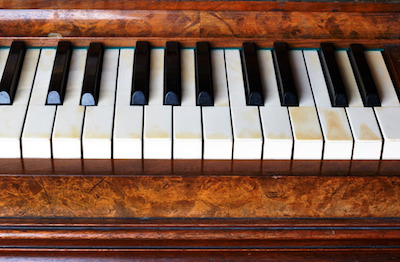Your piano is ever-changing, constantly fluctuating depending on the weather and the climate. It’s only natural that your piano will act differently depending on its environment.
If you have a piano that has been passed down for generations, you may have heard the term “watering your piano.” No, that doesn’t mean you should pull out your watering can and drip water over it. In fact, it’s the quickest way to ruin it.
Instead, what “watering your piano” refers to is a phrase used to explain the presence of a piano humidifier. 
A piano is made up of thousands of parts, the vast majority of them made up of wood. And wood is sensitive to the presence of water. Too much water and wood begins to swell. Not enough and the same wood begins to crack and warp. The right amount means a stable, happy piano that continues to make beautiful music.
Ideally, the humidity level in the room where your piano is on display should be around 45 to 60 percent. When in doubt, err on more humidity, as dry air will cause more damage to a piano than humid air. That being said, too much humidity can cause mildew and mold to set in, especially if dampness exists in the corners and crevices.
By picking up a hygrometer from your local hardware store, you can measure the humidity levels of your home. You may wish to store it in your basement or crawlspace where dampness can be a problem. But you should also occasionally check the room where your piano is housed. Also, keep in mind that it will be different in winter months than in the summer.
Based on your findings, you may need to introduce a humidifier to regulate the humidity levels around your piano. There are many different options, from a room humidifier to a whole-house option.
Now, back to the “watering your piano” concept. Decades ago, before modern technology offered our current HVAC systems that include proper heating, cooling, and ventilation systems, people would worry about the condition of their pianos. They knew low humidity was bad for a piano, so they would keep a jar of water inside the piano to maintain humidity.
If you find an old piano in a back room at your grandmother’s house, passed down for generations, the jar may still be there. However, a jar of water inside the piano is never a good idea. Water is damaging no matter where it spills on a piano. And if it introduces too much water, which can be the case here in our humid environment, what you may introduce is mold and mildew instead.

